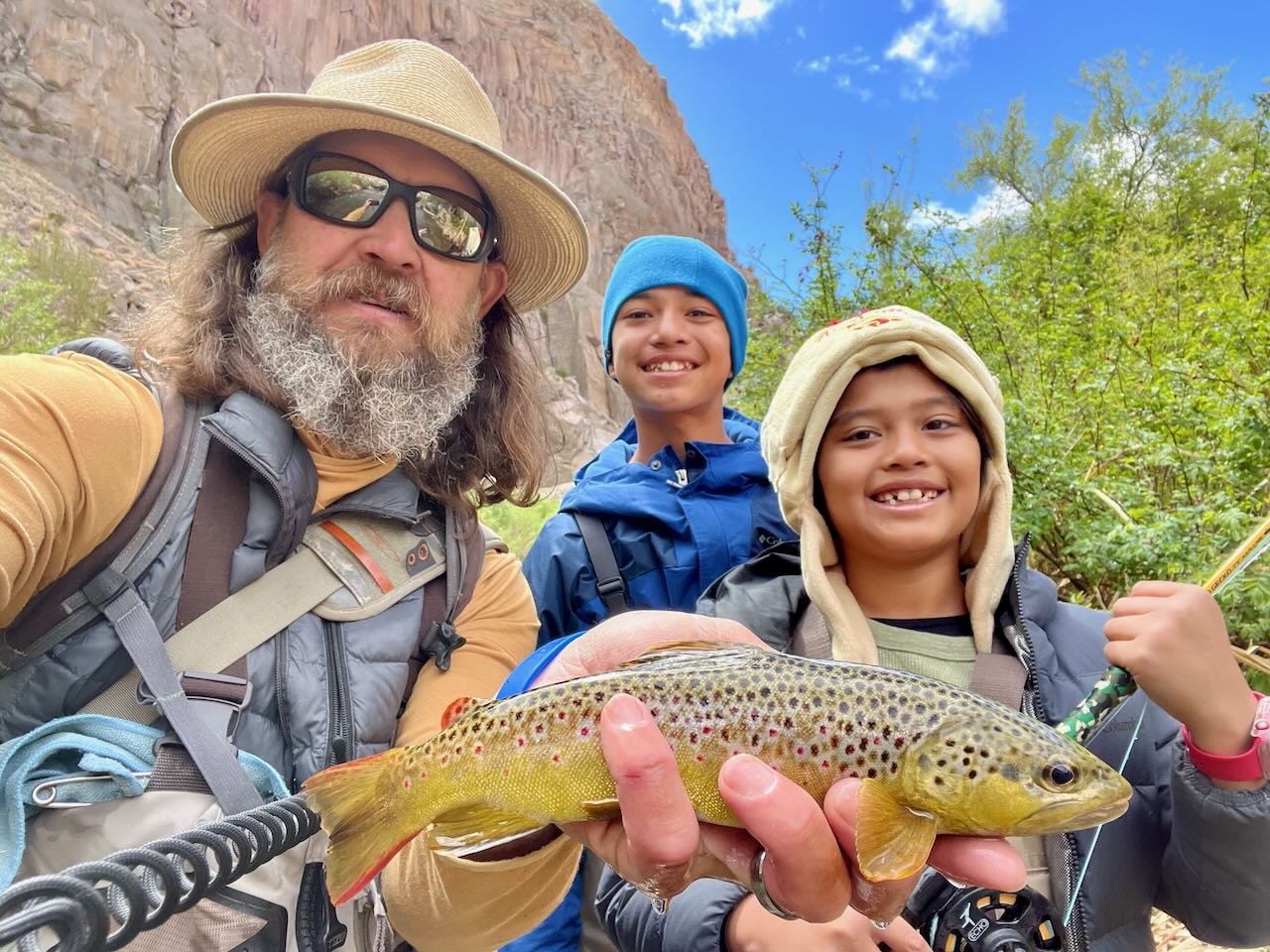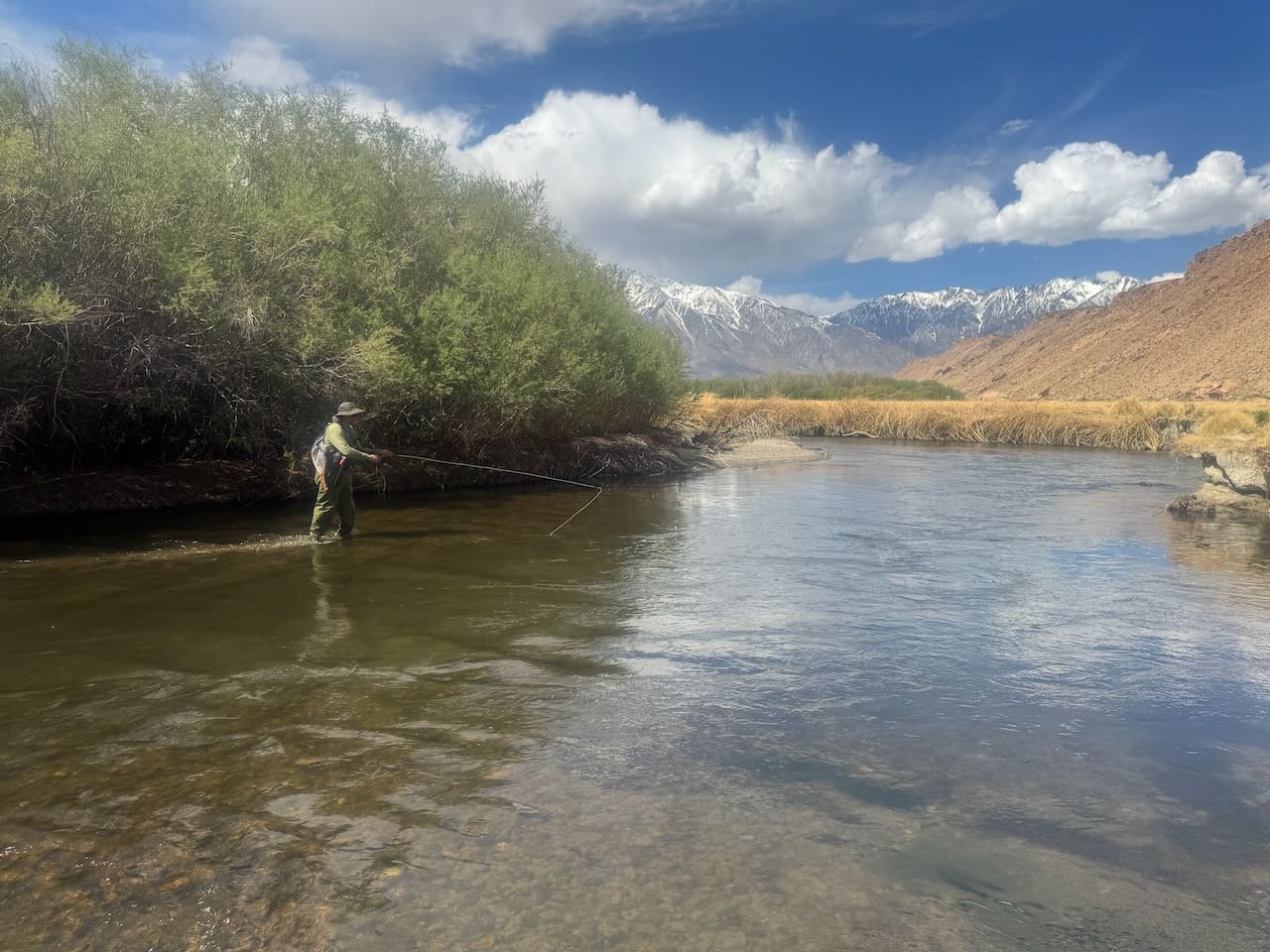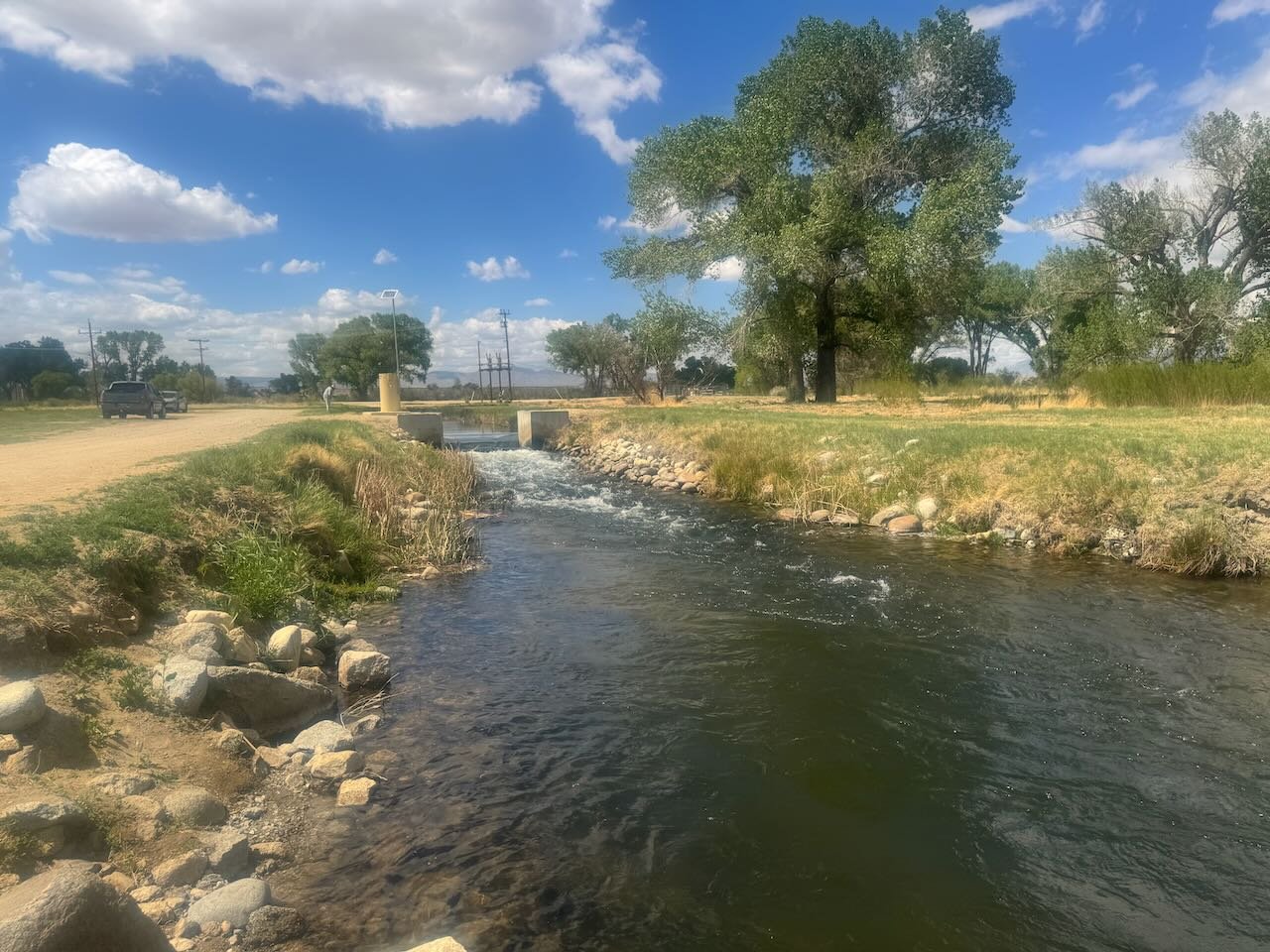So once again opening day in the upper elevations was treated to a one day snow storm. With the increase in anglers on the water it’s time to use good fishing etiquette. With all waters in the eastern Sierra open it is spreading fly fishers out and reducing fly fishing pressure on some waters. Lakes that have been closed all winter are seeing the biggest increase in angler pressure. After a nice warm April it looks like a series of storms are moving through the Eastern Sierra. Spring in the Eastern Sierra is quite often windy and cold. This will make fishing in the weather unpleasant if you’re not wearing the right clothing. Rain in the Eastern Sierra is rare, but always carry a rain jacket for those few rainy days in the Sierra. Mayflies and midges are providing most of the action for the feeding trout. Nymphing continues to be the most productive method of fly fishing on Eastern Sierra waters.
Storms are moving through the Eastern Sierra and leaving rain and fresh snow on the mountain tops.
Owens River Gorge:
Fly fishers looking to fish off the beaten path and willing to put in the effort of hiking in and out of the gorge will find lots of 10 to 14 inch wild browns willing to take their flies. Spring is the perfect time for fly fishing in the gorge as the stinging nettles and rattle snakes are just starting their spring presence in the gorge. Hatches of blue wing olive mayflies and midges are the insects the trout are feeding on. On the surface fish with a size 18 blue wing olive parachute, size 18 Adams parachute and a size 18 olive sparkle dun. Under the surface fish with a size 18 tiger or zebra midge, size 18 olive quilldigon and size 18 bead head flash back pheasant tail nymph. This is a good water to learn how to use a Tenkara rod.
Richard Lancaster showing the results of teaching the kids how to fly fish with nymphs and dries in the Owens River Gorge.
Lower Owens River
Wild Trout Section:
Flows are holding around a 100 CFS, but are expected to go up soon. With the opening of Eastern Sierra waters the fly fishing pressure on the lower Owens River has decreased. Mayflies and midges are the hatching insects that the trout are feeding on. Dry fly fishing has been sporadic with size 18 Adams parachutes and size 18 blue wing olive parachutes. Learning to identify aquatic insects on the wing is one of the things you will learn on a guide trip. Nymphing continues to be the most productive method of fly fishing the river. Nymph with a Euro rig or under and indicator. Nymphing with size 18 olive quilldigons, size 18 bead head flash back pheasant tail nymphs, size 16 SOS nymphs and size 20 midges in zebra and tiger coloration are producing wild brown and rainbow trout. Key to success is fishing with the right amount of weight in the flies or with a split shot on the tippet. The flies should be bouncing on the substrate where the trout are looking for dislodged nymphs. To stay up with the changing flows check out Eastern Sierra water flows on my webpage at https://www.sierrabrightdot.com/water-flows-owens-river-east-walker-river.
With storms brewing in the upper elevations fly fishing on the lower Owens is a great alternative to the snow and rain.
Hot Creek
Interpretive Site:
Still the easiest part of the creek to access. Midge hatches and the occasional blue wing olive mayfly hatching is bringing the trout to the surface. The midges are too small to imitate individually so using a size 24 Griffith’s gnat to imitate a cluster of midges is producing some trout. A size 20 Adams parachute, size 20 blue wing olive parachute and a size 20 sparkle dun are producing a few of the wild brown and rainbow trout feeding on the sporadic hatching mayflies. The gray Hot Creek caddis is just starting to get active and fly fishers should be carrying a few gray parachute caddis, gray elk hair caddis and X-caddis in size 20.
Look for crowds on Hot Creek to increase as spring becomes summer.
Hot Creek
Canyon Section:
The hike in and out of the canyon is keeping the fly fishing pressure down in the canyon. Euro nymphing, tight ling nymphing or a dry and dropper rig is the way to present your nymphs to the trout feeding on the substrate. The water in the creek is low running at about 18 inches deep. For the dry and dropper rig use a size 12 stimulator, size 12 Chernobyl Ant and a size 16 Adams parachute. Fish nymphs under the dry fly with a three foot tippet of 5X fluorocarbon. For nymphs fish with a size 16 SOS nymph, size 18 bead head flash back pheasant tail nymph, size 18 olive quilldigon and size 20 midges in tiger and zebra coloration. Lots of rainbows and browns are taking the nymphs fished in riffles and deep holes throughout the canyon section.
Plying the deep holes, deep runs and cutbanks of the upper Owens River with stoner nymphs and green/gold wire Prince nymphs did not produce any trophy cutthroat trout.
Upper Owens River
Above Benton Crossing Bridge:
The cutthroat run is just starting as there are a few trophy cutthroat trout entering the upper Owens River. For fly fishers looking for a trophy cutthroat fish from Crowley Lake upstream towards Benton Crossing Bridge. The cutthroats are just starting their migration and can be found in the deeper holes, and deep runs above Crowley Lake. Fishing with size 12 stoner nymphs, size 12 green/gold Prince nymphs, size 12 gold ribbed hare’s ears variations and size 14 copper John’s are fooling the migrating trophy cutthroat trout. Look for the cutthroat run to peek between May 10th and May 20th. Nymphing upstream of Benton Crossing Bridge with size 18 olive quilldigons, size 18 bead head flash back pheasant tail nymphs, size 20 tiger midges and size 20 zebra midges is producing a few resident rainbow and brown trout to 12 inches.
With the opening of trout season on Bishop Creek Canal there is a big increase in fishing pressure.
Bishop Creek Canal
Behind Bishop Veterinary Hospital:
With the opening of trout season the canal has seen a big increase in fishing pressure. For those that know how to read the water and present their imitations to the trout they’re catching trout. For those that do not know the proper techniques for fishing the canal are not catching trout. Fly fishers showing patience on the canal will find that anglers will get frustrated easily and leave the area with in 15 or 20 minutes of arriving on the canal to fish. Fishing the areas vacated from fellow anglers has been productive with nymphs fished under an indicator or with a Euro rig. Fish the sandy seams between the weed beds. Thoroughly cover the seams and then move ten feet up the canal and thoroughly cover this next section of the canal. Work your way up the canal covering all the water until you have caught enough trout or wear out from fishing this area. Under an indicator fish with a size 18 bead head flash back pheasant tail nymphs, size 16 SOS nymph, size 20 tiger midge and size 20 zebra midge. Place the indicator 1 ½ to 2 times the average depth of water above the fly. Use a size one split shot placed 12 to 18 inches above the fly. Use three feet of 5x fluorocarbon tippet attached to your tapered leader. This is a great area to learn how to nymph fish from an expert like the guides from Sierra Bright Dot.






